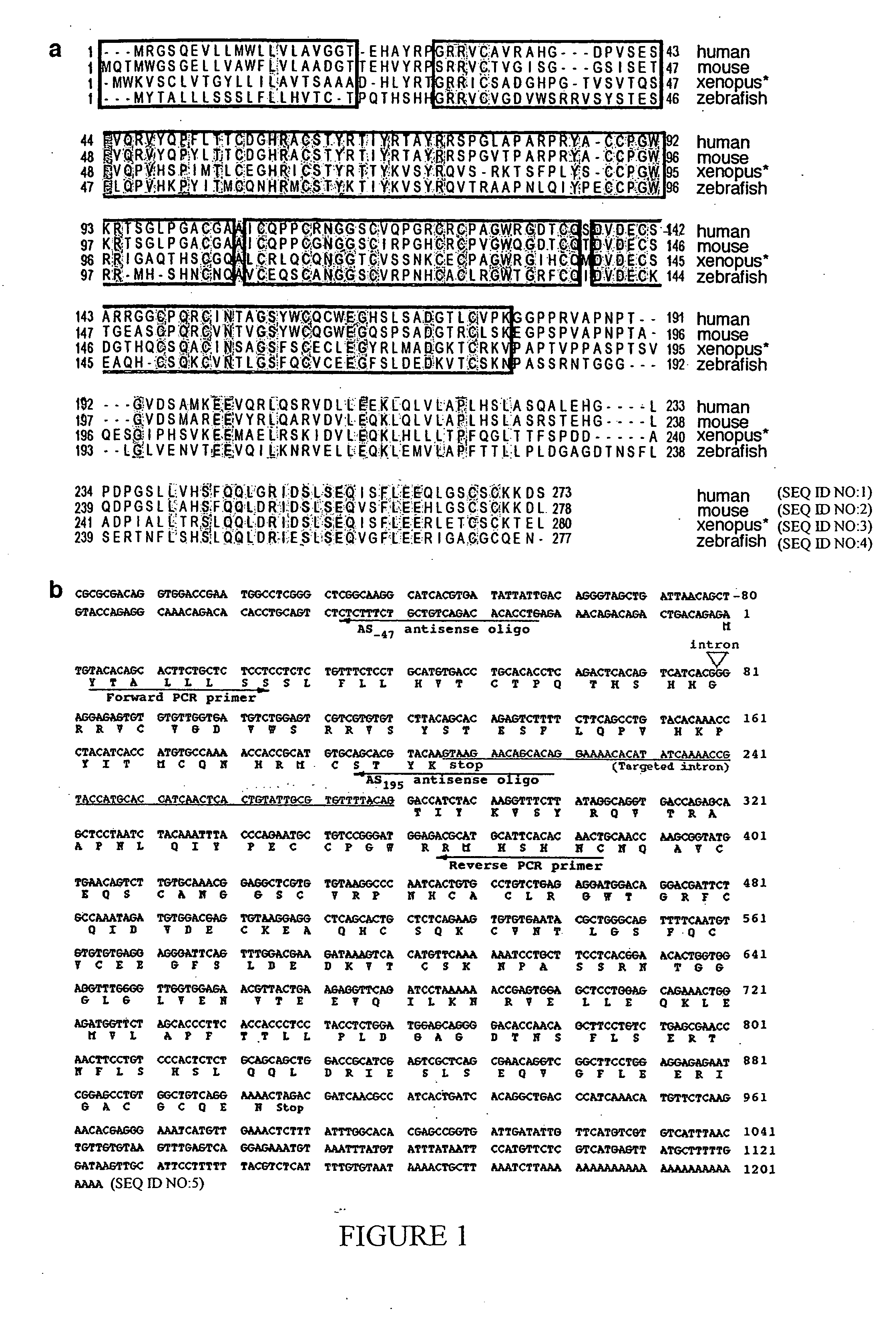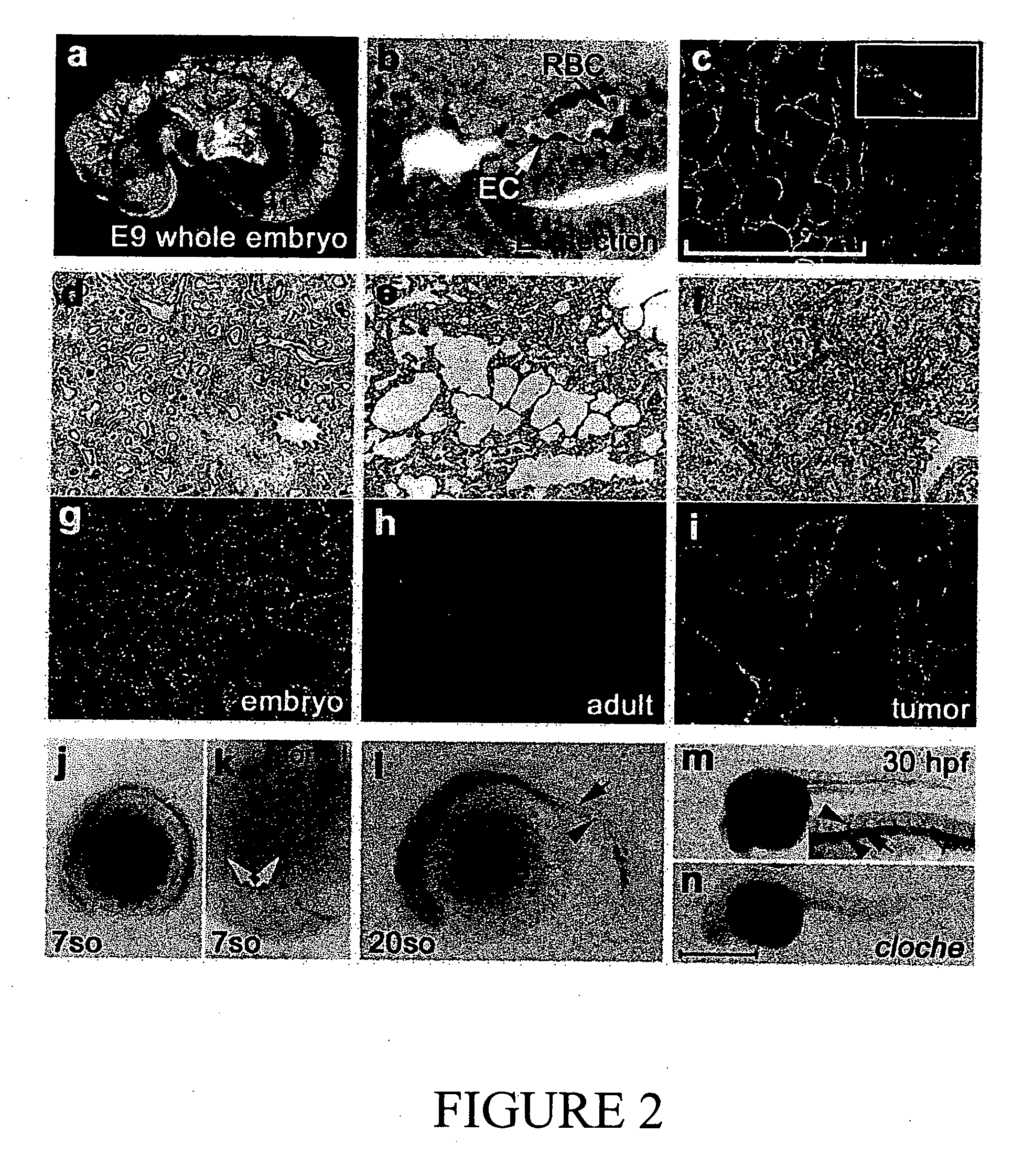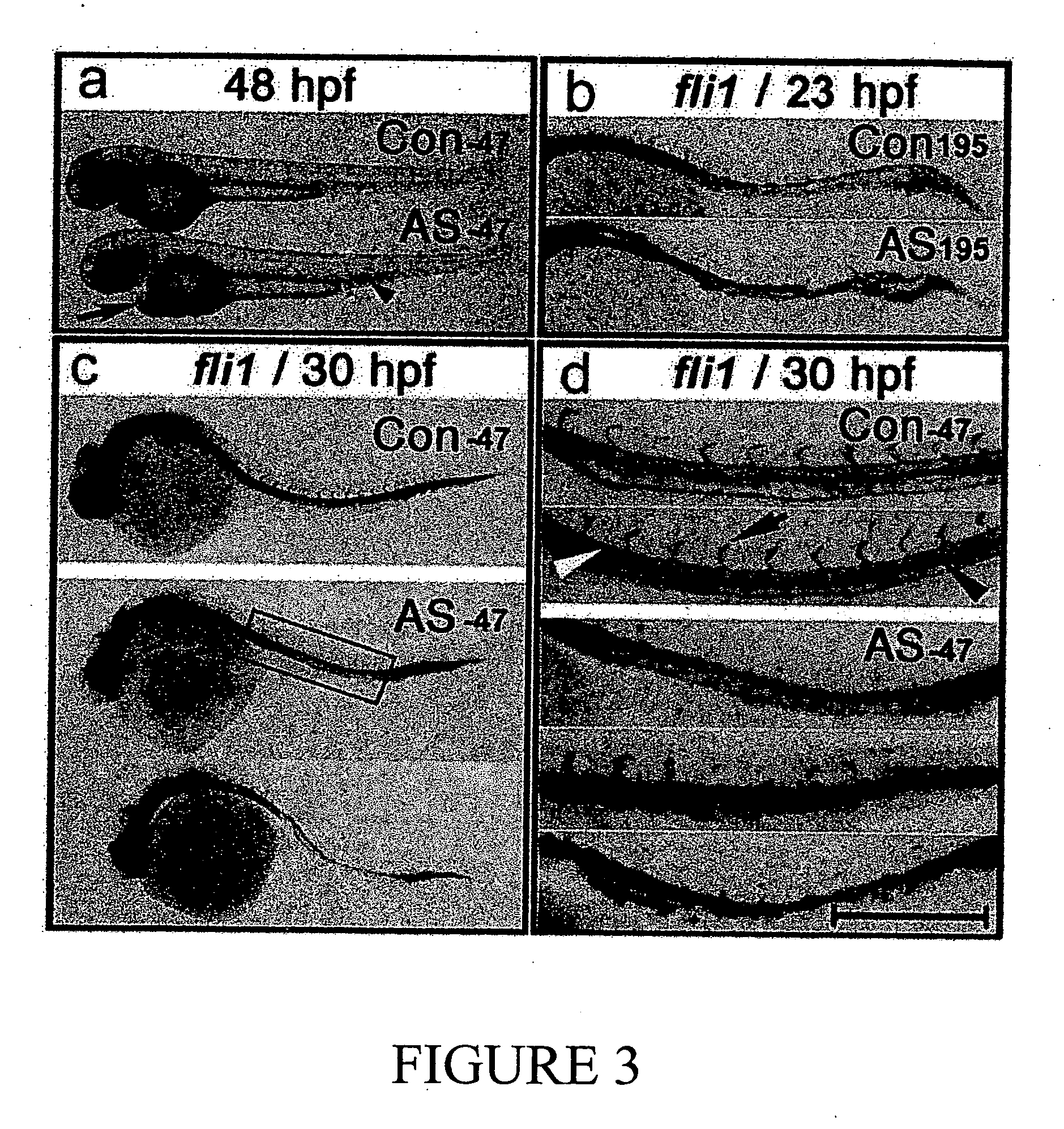Compositions and methods for modulating vascular development
- Summary
- Abstract
- Description
- Claims
- Application Information
AI Technical Summary
Benefits of technology
Problems solved by technology
Method used
Image
Examples
example 1
Cloning of EGFL7
[0318] EGFL7 was identified and cloned in an effort to discover novel human secreted and transmembrane proteins, particularly those involved in the regulation of vascular development. Details of the cloning and expression of human EGFL7 are described in, for example, patent application US20030224948A1 (wherein EGFL7 is identified as PRO1449). Briefly, whole mount in situ hybridization screens were performed to identify secreted factors and receptors that are enriched in mouse embryonic vasculatures. By way of signal sequence prediction and extracellular domain homology searching, hundreds of human and mouse cDNAs representing putative secreted factors and receptors were identified and collected. Using the mouse cDNAs as templates, riboprobes were generated and in situ hybridizations were performed on whole mouse embryos ranging from E7.5 to E14.5. This developmental time window was chosen because it encompasses many key stages in vasculogenesis and angiogenesis. Amo...
example 2
Expression of EGFL7
[0326] To elucidate the expression pattern of EGFL7, whole mount in situ hybridization, immunofluorescent staining and radioactive in situ hybridization were carried out on mouse and zebrafish embryos as well as mouse and human tissue sections.
[0327] Zebrafish and Mouse Strains
[0328] Mouse embryos were harvested from timed-pregnant CD-1 mice. Tüebingen long fin (TL) wild-type zebrafish line, ˜30 hpf cloche (Clom39) homozygous mutant embryos and their wild-type siblings were used in the expression and activity studies described herein below. Adult zebrafish and embryos were maintained as previously described (Westerfield 1993 Zebrafish Book).
[0329] Radioactive in situ Hybridization
[0330] Tissues were processed for in situ hybridization by a method described previously. Phillips et al. (1990) Science 250:290-4. 33P-UTP-labelled RNA probes were generated as described. Melton et al. (1984) Nucleic Acids Research 12:7035-56. EGFL7 sense and antisense probes were s...
example 3
Phenotypic Analysis of Animals with Reduced EGFL7 Activity
[0343] A. Vascular Defects in the EGFL7 Knockdown Zebrafish
[0344] In a recent report, conditioned medium containing the recombinant EGFL7 protein is shown to inhibit smooth muscle cell (SMC) migration in vitro. Soncin et al. EMBO J. 22:5700-5711 (2003). However, its in vivo function has not been defined. To uncover the in vivo biological function of EGFL7, the model organism zebrafish was used because of the availability of tools to study vasculogenesis and angiogenesis, and the ease to manipulate gene expression in embryos. Fishman et al. Circulation Research 74:757-63 (1994); Weinstein et al. Cardiovascular Research 31 :E17-24 (1996); Dooley et al. Current Opinion in Genetics &Development 10:252-6(2000); Nasevicius & Ekker Nature Genetics 26:216-20 (2000). Furthermore, it was found that Egfl8 was expressed in a subset of blood vessels and peripheral nerves in mouse embryos, making it a potential redundant factor for EGFL7...
PUM
| Property | Measurement | Unit |
|---|---|---|
| Chemotherapeutic properties | aaaaa | aaaaa |
| Cell growth | aaaaa | aaaaa |
Abstract
Description
Claims
Application Information
 Login to View More
Login to View More - R&D
- Intellectual Property
- Life Sciences
- Materials
- Tech Scout
- Unparalleled Data Quality
- Higher Quality Content
- 60% Fewer Hallucinations
Browse by: Latest US Patents, China's latest patents, Technical Efficacy Thesaurus, Application Domain, Technology Topic, Popular Technical Reports.
© 2025 PatSnap. All rights reserved.Legal|Privacy policy|Modern Slavery Act Transparency Statement|Sitemap|About US| Contact US: help@patsnap.com



